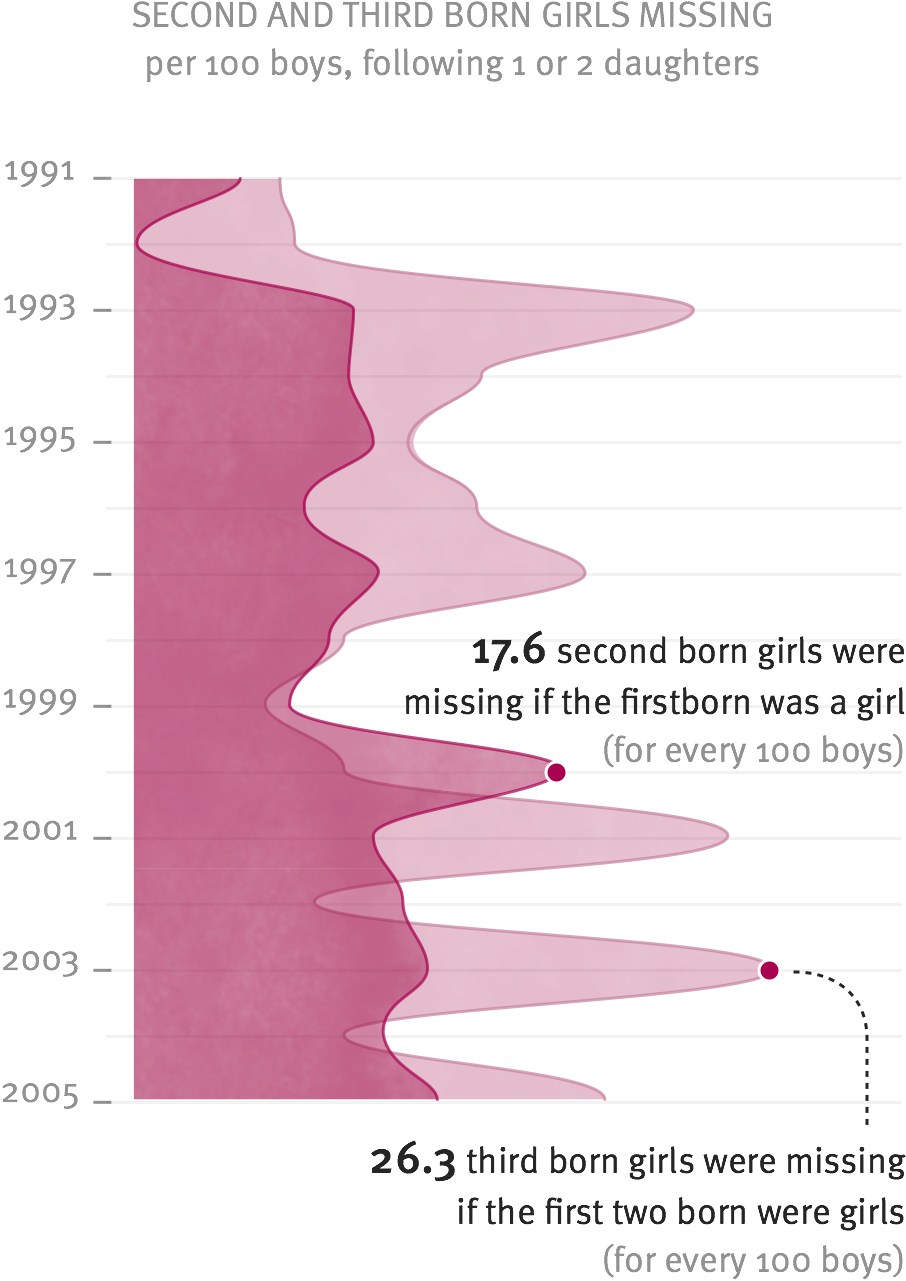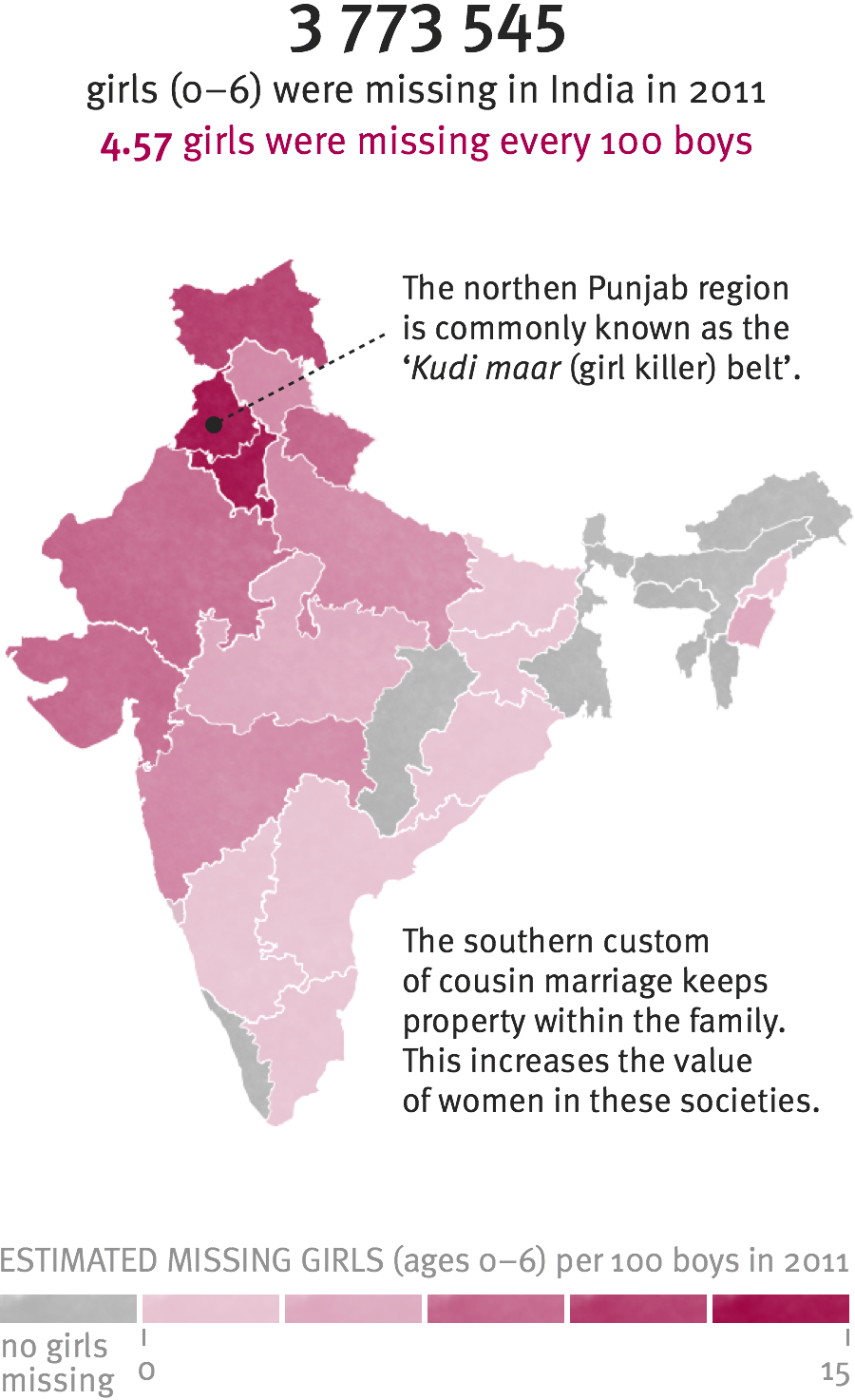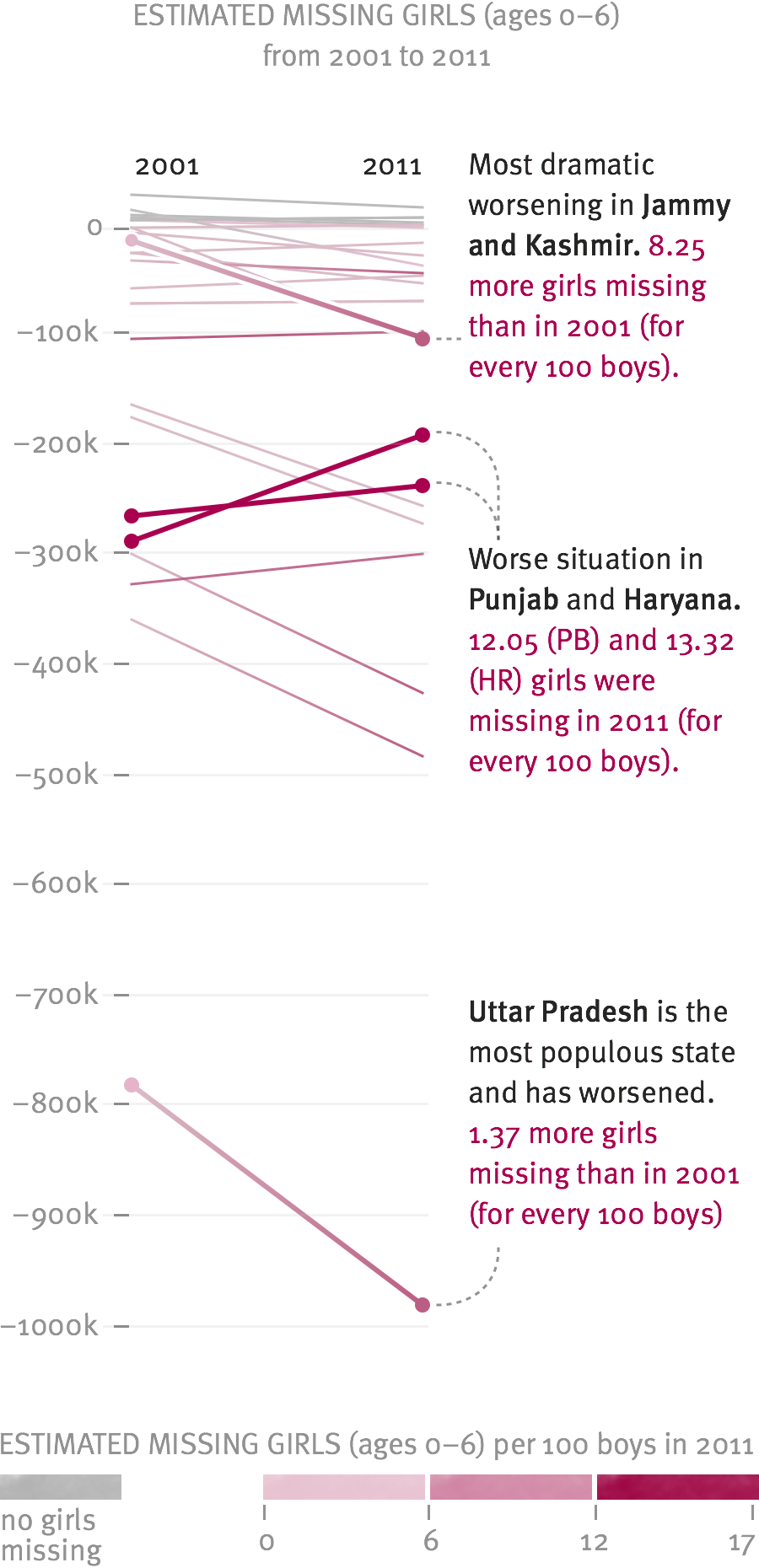
The ongoing war against daughters in India
629’000 girls (aged 0–6 years) are estimated to be missing in India every year.
The majority of them are aborted, others are killed, abandoned or neglected to death just because they are girls. The roots of this problem lie in a strong patriarchal society that has translated into an obsessive preference for sons and discrimination against girls.
This is an analysis of the problem from the inside, a research of reasons and related factors to draw a picture of the foeticide and infanticide in India.
kills their daughter
- aborted
- abandoned
- buried alive
- poisoned
- crushed with stones
- starved
- let die of infections
- stifled with a pillow
- they won't help with work
- they won't continue the family name
- they will need an expensive dowry for the groom's family
- they will move to their in-laws and will not take care of their parents in old age
NO MORE YOUNGER SISTERS
The first girl is usually allowed to live. Also for girls born following a boy the biological ratio (on average 96.2 girls per 100 boys) is respected. But in families with a firstborn daughter, a second girl has less chances of being born, a third girl even less.[2]
Families can usually afford to pay only one dowry*, therefore they don’t want more than one daughter.
*The payment of dowries has been illegal in India since 1961 (Dowry Prohibition Act), but this practice remains widespread across castes, religions and education levels.

WEALTHY PARENTS PREFER SONS
Chances of survival for a second born girl after a first daughter are less if the family is well educated and rich[2]. These families live in urban areas where they have access to ultrasound scans and can afford the price for the abortion. Although prenatal sex-detection and sex-selective abortion is illegal*, many clinics provide these services.
In poorer communities, where there aren’t many ultrasound clinics, daughters are instead abandoned or killed after being born, or lost through neglect.
*With the Medical Termination of Pregnancy Act of 1971, abortion in India became legal up to twenty weeks and under specific conditions such as medical risk to mother. Gender-based abortions have been illegal since 1994 with the Pre-conception and Prenatal Diagnostic Techniques (Prohibition of Sex Selection) Act.

A NATIONAL SHAME
The number of missing girls has increased between 2001 and 2011 census, becoming a substantial problem in northwestern India.
In southern and eastern states women have a more active role in the economy especially in country’s farm production. In these communities women are less discriminated and daughters are more appreciated.[5]

EMERGING MIDDLE CLASSES
As India’s economy is growing a new middle class is emerging. These families prefer fewer children and want a son to take forward their business.
Worrying trends can be observed in states like Uttar Pradesh, Maharashtra, Rajasthan and Jammu and Kashmir.
Improvements in Punjab, Haryana and Himachal Pradesh can be attributed to a ‘mature middle class’, financially more stable and open to have daughters.[7]

Share
Help India’s daughters to bring attention to the issue and raise global awareness.Download
Feel free to download and use the charts below on your blog, article, report or research paper.